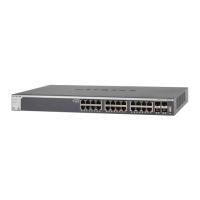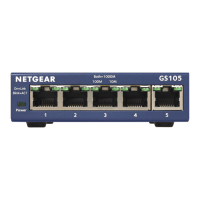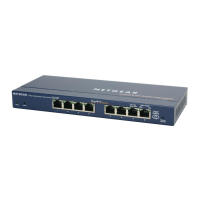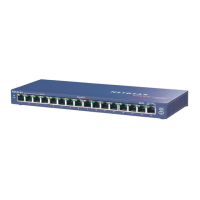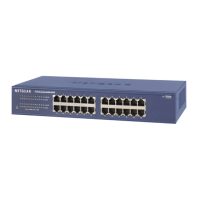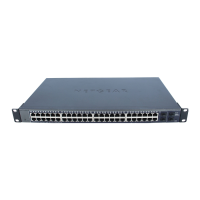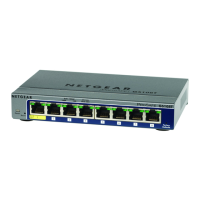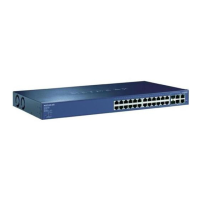Configure Quality of Service
205
ProSAFE 10-Gigabit Smart Managed Switch XS728T and XS748T User Manual
Manage Differentiated Services
The QoS feature contains Differentiated Services (DiffServ) support that allows traffic to be
classified into streams and given certain QoS treatment in accordance with defined per-hop
behaviors.
Standard IP-based networks are designed to provide best effort data delivery service. Best
effort service implies that the network delivers the data in a timely fashion, although there is
no guarantee. During times of congestion, packets might be delayed, sent sporadically, or
dropped. For typical Internet applications, such as email and file transfer, a slight degradation
in service is acceptable and in many cases unnoticeable. Conversely, any degradation of
service can negatively affect applications with strict timing requirements, such as voice or
multimedia.
From the QoS > Diffserv > Advanced menu, you can access pages that are described in
the following sections:
• DiffServ Overview on page 205
• View the Global DiffServ Resources on page 206
• Specify DSCP Remark Values for Violate Action IP Packets on page 206
• Configure IPv4 DiffServ Classes on page 208
• Configure an IPv6 DiffServ IPv6 Classes on page 212
• Configure a DiffServ Policy on page 216
• Configure DiffServ Service Interfaces on page 221
• View DiffServ Service Statistics on page 223
DiffServ Overview
To use DiffServ for QoS, you must first define the following categories and their criteria:
1. Class. Create classes and define class criteria.
2. Policy. Create policies, associate classes with policies, and define policy statements.
3. Service. Add a policy to an inbound interface.
Packets are classified and processed based on defined criteria. The classification criteria are
defined by a class. The processing is defined by a policy’s attributes. Policy attributes can be
defined on a per-class instance basis, and it is these attributes that are applied when a match
occurs. A policy can contain multiples classes. When the policy is active, the actions taken
depend on which class matches the packet.
The configuration process begins with defining one or more match criteria for a class. Then
one or more classes are added to a policy. Policies are then added to interfaces.
Packet processing begins by testing the class match criteria for a packet.
The All class type option specifies that each match criteria within a class must evaluate to
true for a packet to match that class. Classes are tested in the order in which they were
added to the policy.
A policy is applied to a packet when a class match within that policy is found.
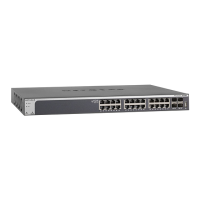
